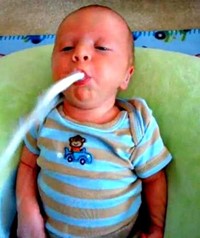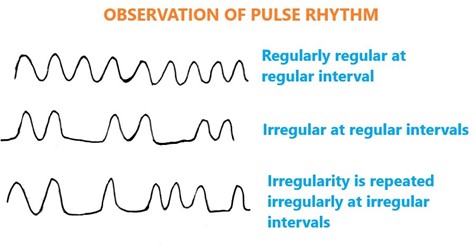A 3-week-old infant is admited to the pediatric unit with vomiting and dehydration. The mother describes the infant as having projectile vomiting after eating. She also tells the practical nurse (PN) that the baby is always hungry. Which finding warrants immediate intervention by the PN?
Hyperactive gastric sounds.
Irregular palpable pulse.
Crying without tears.
Underweight for age.
The Correct Answer is B
This finding may indicate a potential cardiac issue that needs immediate medical atention. Projectile vomiting and excessive hunger in a young infant may be signs of pyloric stenosis, a condition in which the muscle between the stomach and small intestine thickens, making it difficult for food to pass through.
Hyperactive gastric sounds may be present with vomiting, but it is not an immediate concern.
Crying without tears may be a sign of dehydration, but it is not an immediate concern.
Underweight for age is a concern but it is not a finding that requires immediate intervention.


Nursing Test Bank
Naxlex Comprehensive Predictor Exams
Related Questions
Correct Answer is A
Explanation
Newborns have a stump of the umbilical cord attached to their belly button which eventually falls off within 1-2 weeks. During this time, it is important to keep the area clean and dry to prevent infection. The PN should instruct the parents to clean the area with water and a clean cloth or cotton swab, and then gently pat the area dry with a clean towel. The parents should also be advised to avoid using any harsh soaps, lotions, or alcohol on the cord stump, as this can cause irritation or delay the healing process. It is not recommended to cover the cord stump with a sterile dressing unless specifically instructed to do so by a healthcare provider.

Correct Answer is B
Explanation
Repeated visits to multiple emergency departments for various injuries or complaints can be a red flag for possible child abuse. The other options may indicate other issues or concerns, but they do not provide as much reason to suspect child abuse as the history of repeated visits to different emergency departments. It is important for healthcare providers to remain vigilant for signs of child abuse and to report any suspicions to the appropriate authorities.

Whether you are a student looking to ace your exams or a practicing nurse seeking to enhance your expertise , our nursing education contents will empower you with the confidence and competence to make a difference in the lives of patients and become a respected leader in the healthcare field.
Visit Naxlex, invest in your future and unlock endless possibilities with our unparalleled nursing education contents today
Report Wrong Answer on the Current Question
Do you disagree with the answer? If yes, what is your expected answer? Explain.
Kindly be descriptive with the issue you are facing.
